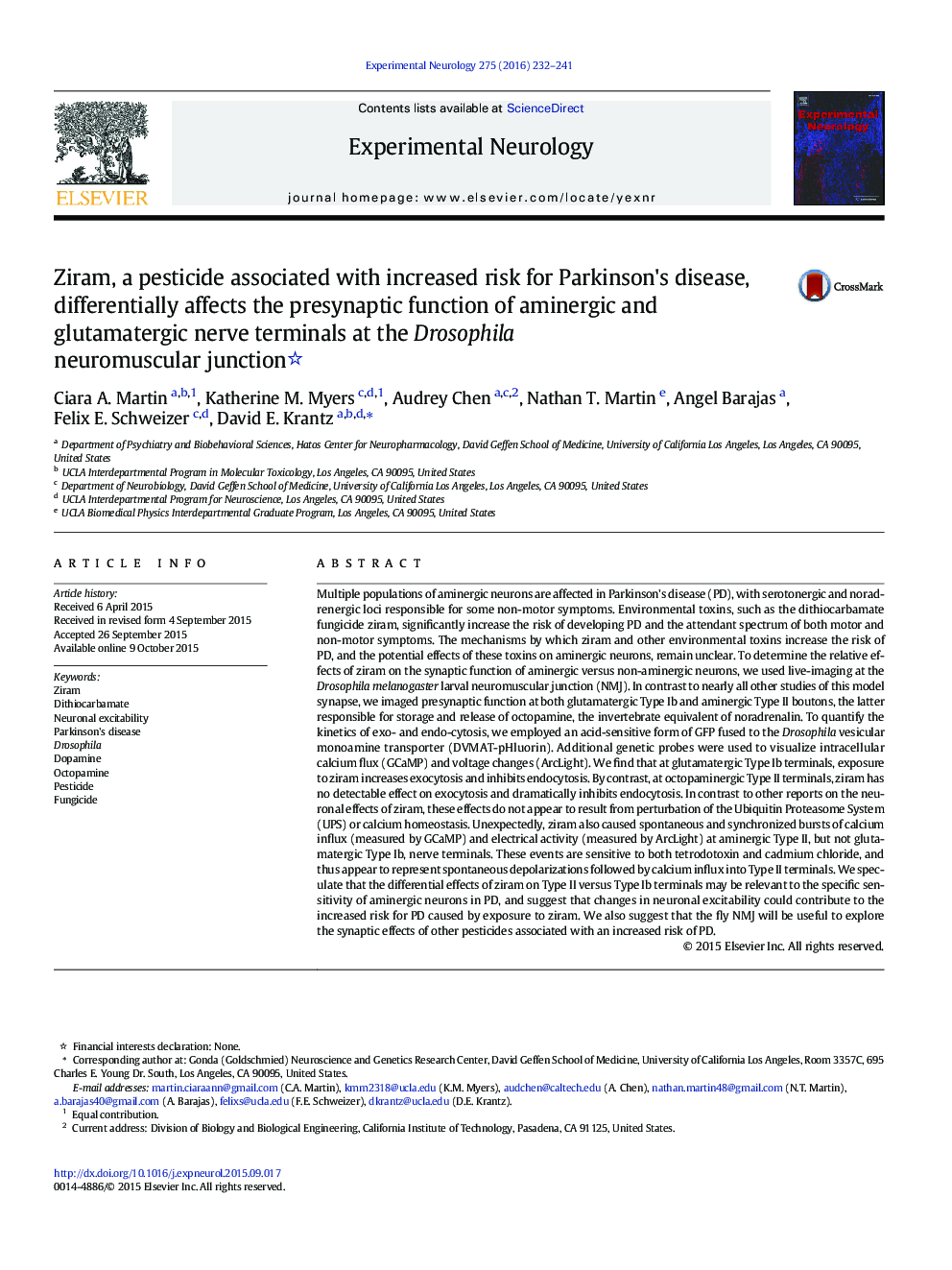| کد مقاله | کد نشریه | سال انتشار | مقاله انگلیسی | نسخه تمام متن |
|---|---|---|---|---|
| 3055369 | 1186481 | 2016 | 10 صفحه PDF | دانلود رایگان |

• The dithiocarbamate fungicide ziram increases the risk for Parkinson's disease.
• The fly neuromuscular junction (NMJ) contains aminergic and glutamatergic terminals.
• Ziram differentially affects aminergic versus glutamatergic terminals at the fly NMJ.
• Ziram may increase the excitability of aminergic neurons.
Multiple populations of aminergic neurons are affected in Parkinson's disease (PD), with serotonergic and noradrenergic loci responsible for some non-motor symptoms. Environmental toxins, such as the dithiocarbamate fungicide ziram, significantly increase the risk of developing PD and the attendant spectrum of both motor and non-motor symptoms. The mechanisms by which ziram and other environmental toxins increase the risk of PD, and the potential effects of these toxins on aminergic neurons, remain unclear. To determine the relative effects of ziram on the synaptic function of aminergic versus non-aminergic neurons, we used live-imaging at the Drosophila melanogaster larval neuromuscular junction (NMJ). In contrast to nearly all other studies of this model synapse, we imaged presynaptic function at both glutamatergic Type Ib and aminergic Type II boutons, the latter responsible for storage and release of octopamine, the invertebrate equivalent of noradrenalin. To quantify the kinetics of exo- and endo-cytosis, we employed an acid-sensitive form of GFP fused to the Drosophila vesicular monoamine transporter (DVMAT-pHluorin). Additional genetic probes were used to visualize intracellular calcium flux (GCaMP) and voltage changes (ArcLight). We find that at glutamatergic Type Ib terminals, exposure to ziram increases exocytosis and inhibits endocytosis. By contrast, at octopaminergic Type II terminals, ziram has no detectable effect on exocytosis and dramatically inhibits endocytosis. In contrast to other reports on the neuronal effects of ziram, these effects do not appear to result from perturbation of the Ubiquitin Proteasome System (UPS) or calcium homeostasis. Unexpectedly, ziram also caused spontaneous and synchronized bursts of calcium influx (measured by GCaMP) and electrical activity (measured by ArcLight) at aminergic Type II, but not glutamatergic Type Ib, nerve terminals. These events are sensitive to both tetrodotoxin and cadmium chloride, and thus appear to represent spontaneous depolarizations followed by calcium influx into Type II terminals. We speculate that the differential effects of ziram on Type II versus Type Ib terminals may be relevant to the specific sensitivity of aminergic neurons in PD, and suggest that changes in neuronal excitability could contribute to the increased risk for PD caused by exposure to ziram. We also suggest that the fly NMJ will be useful to explore the synaptic effects of other pesticides associated with an increased risk of PD.
Journal: Experimental Neurology - Volume 275, Part 1, January 2016, Pages 232–241